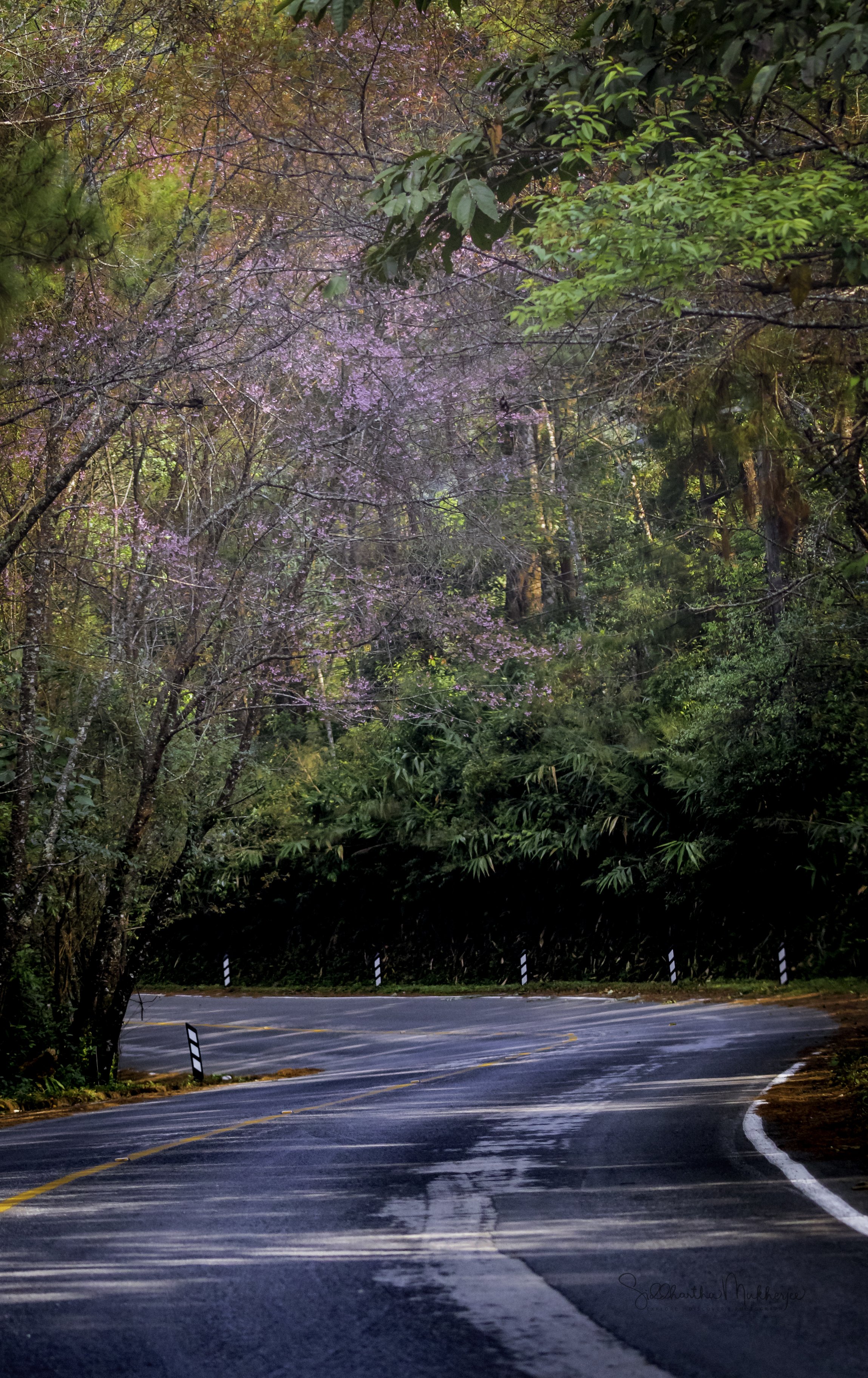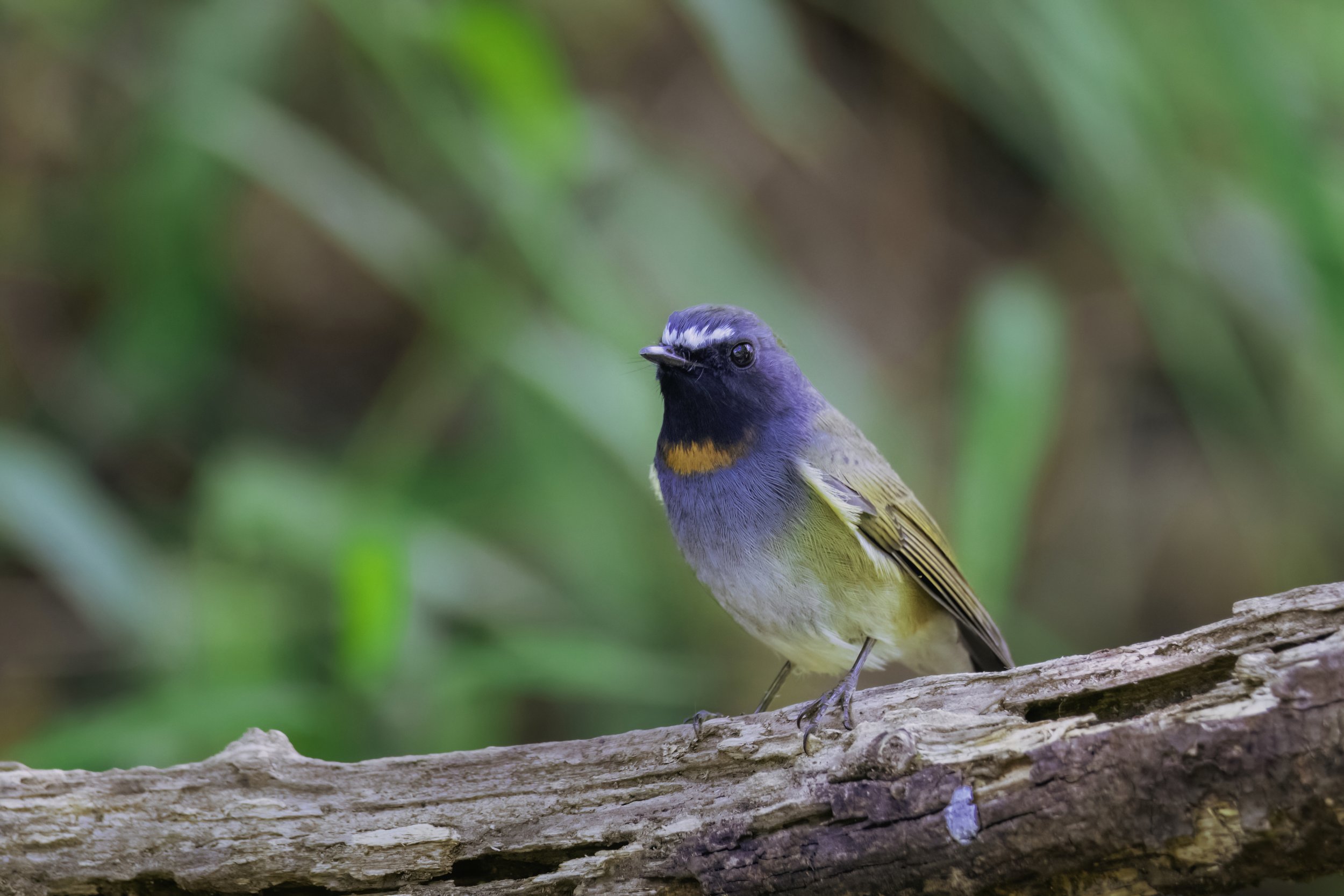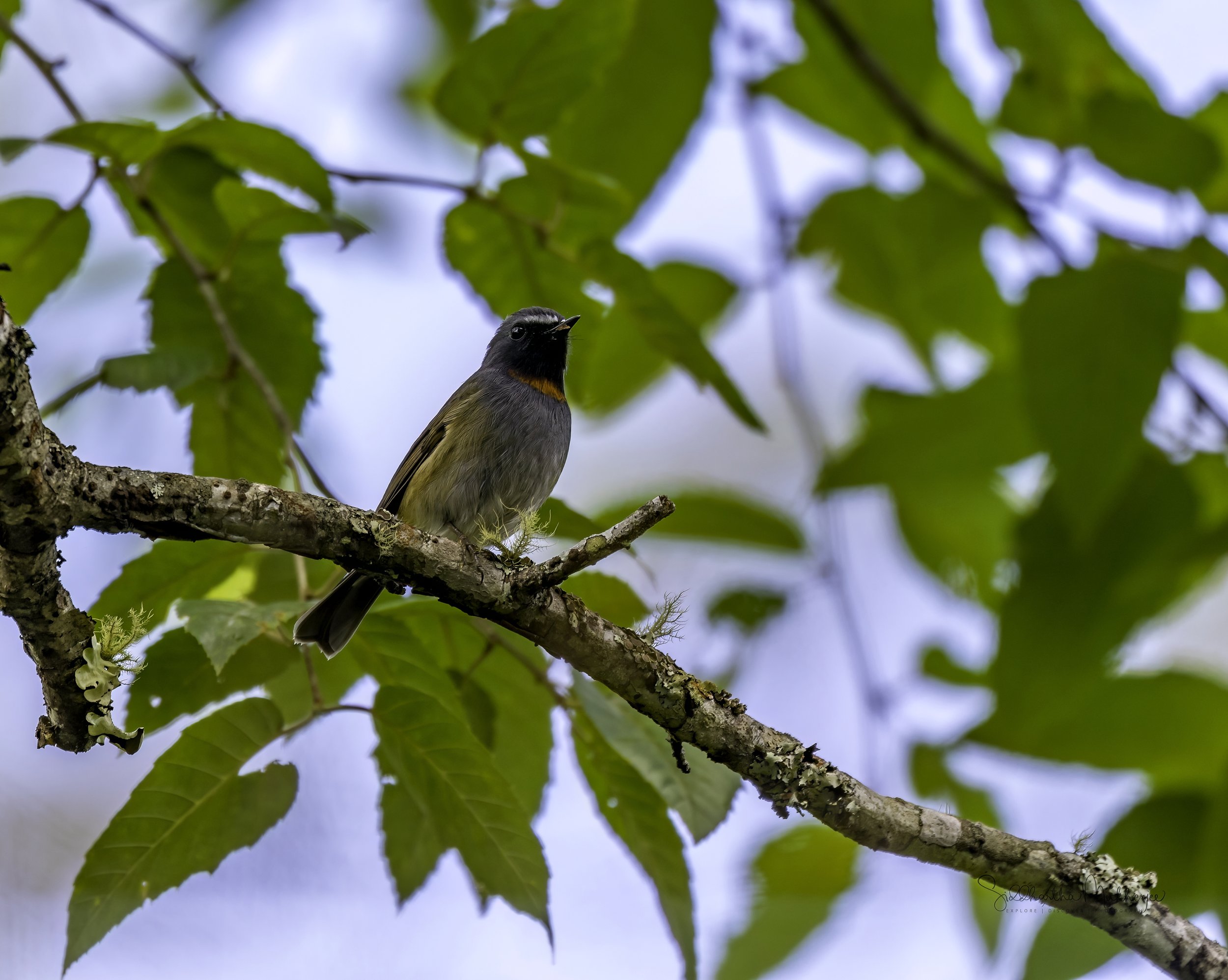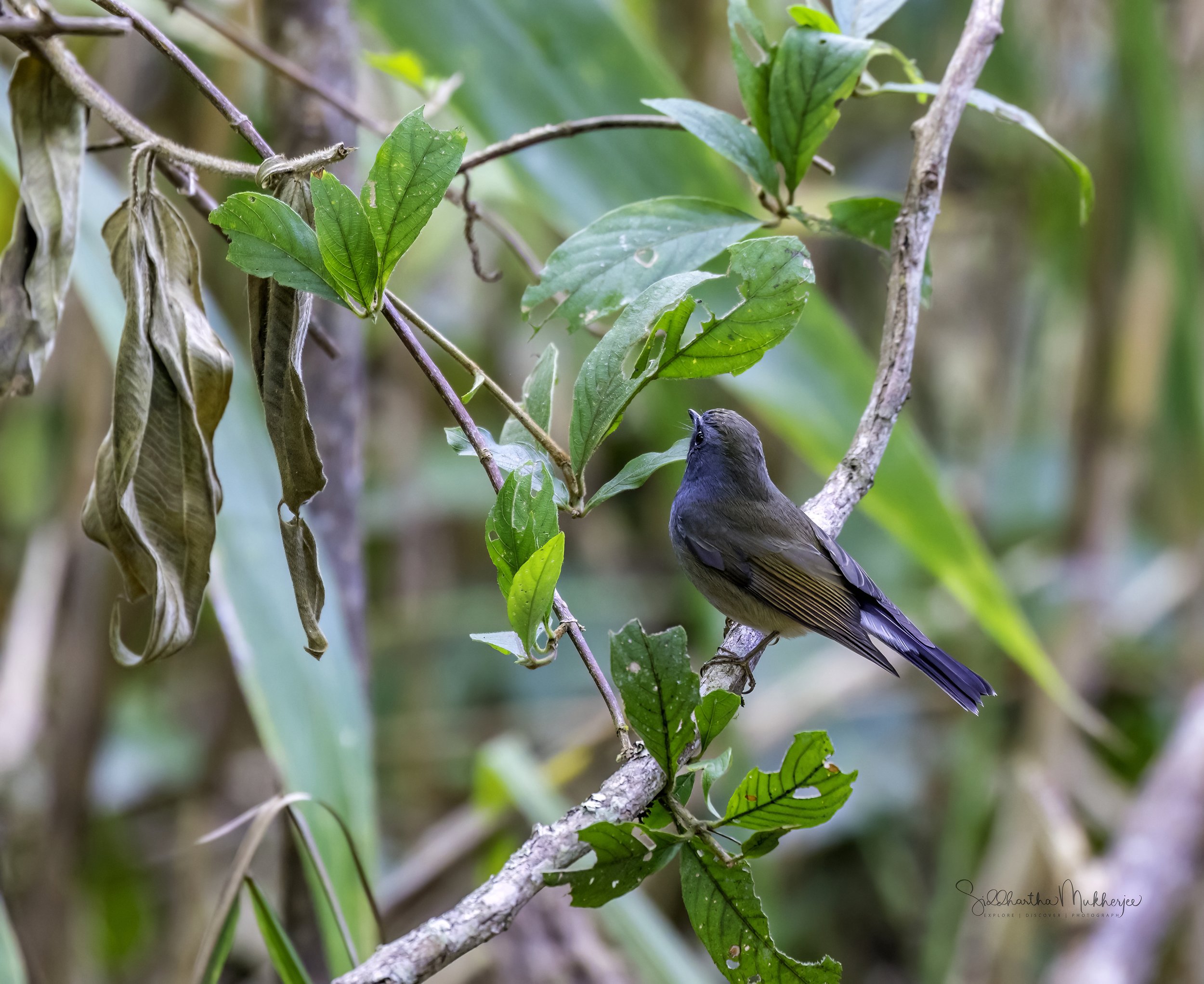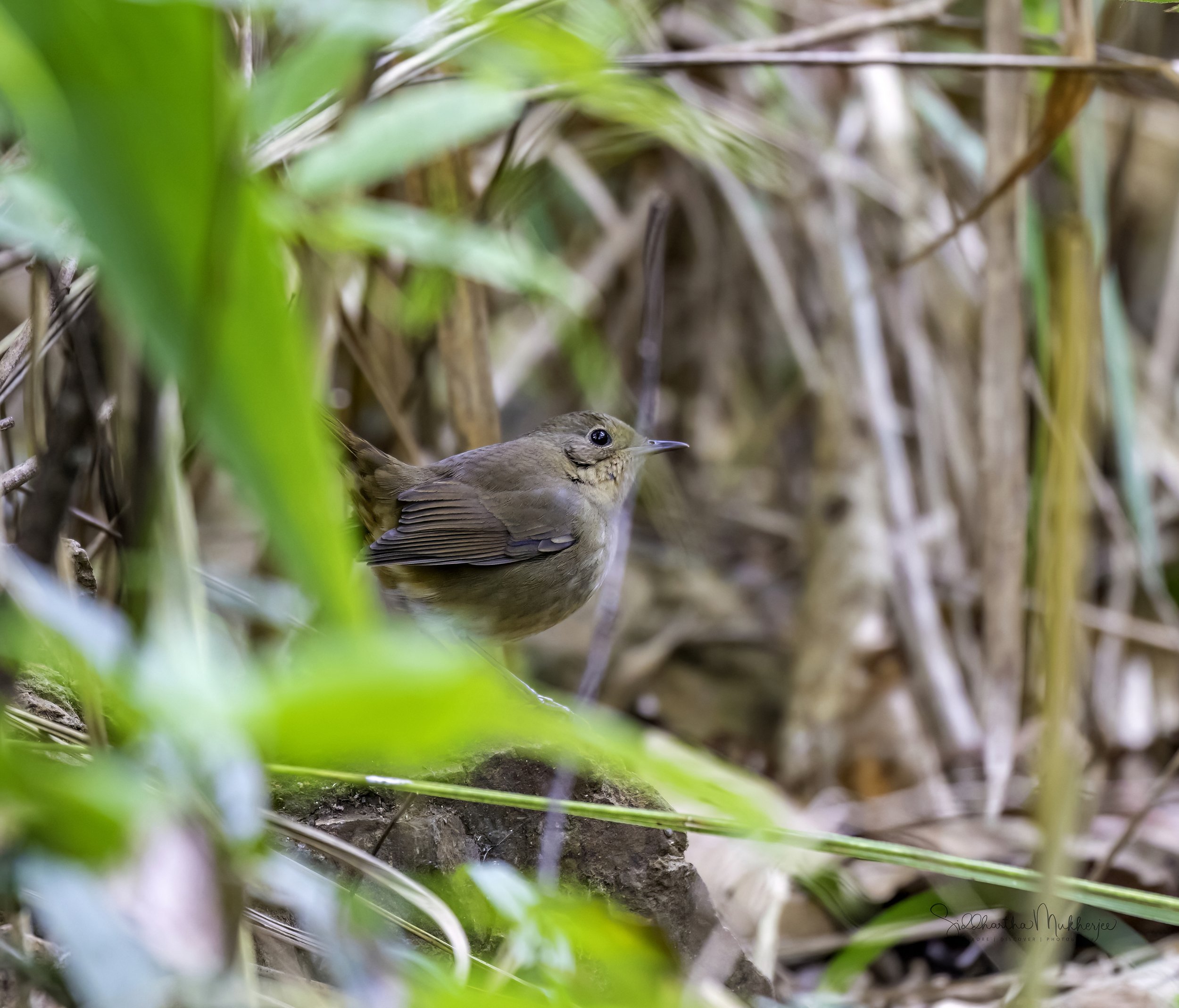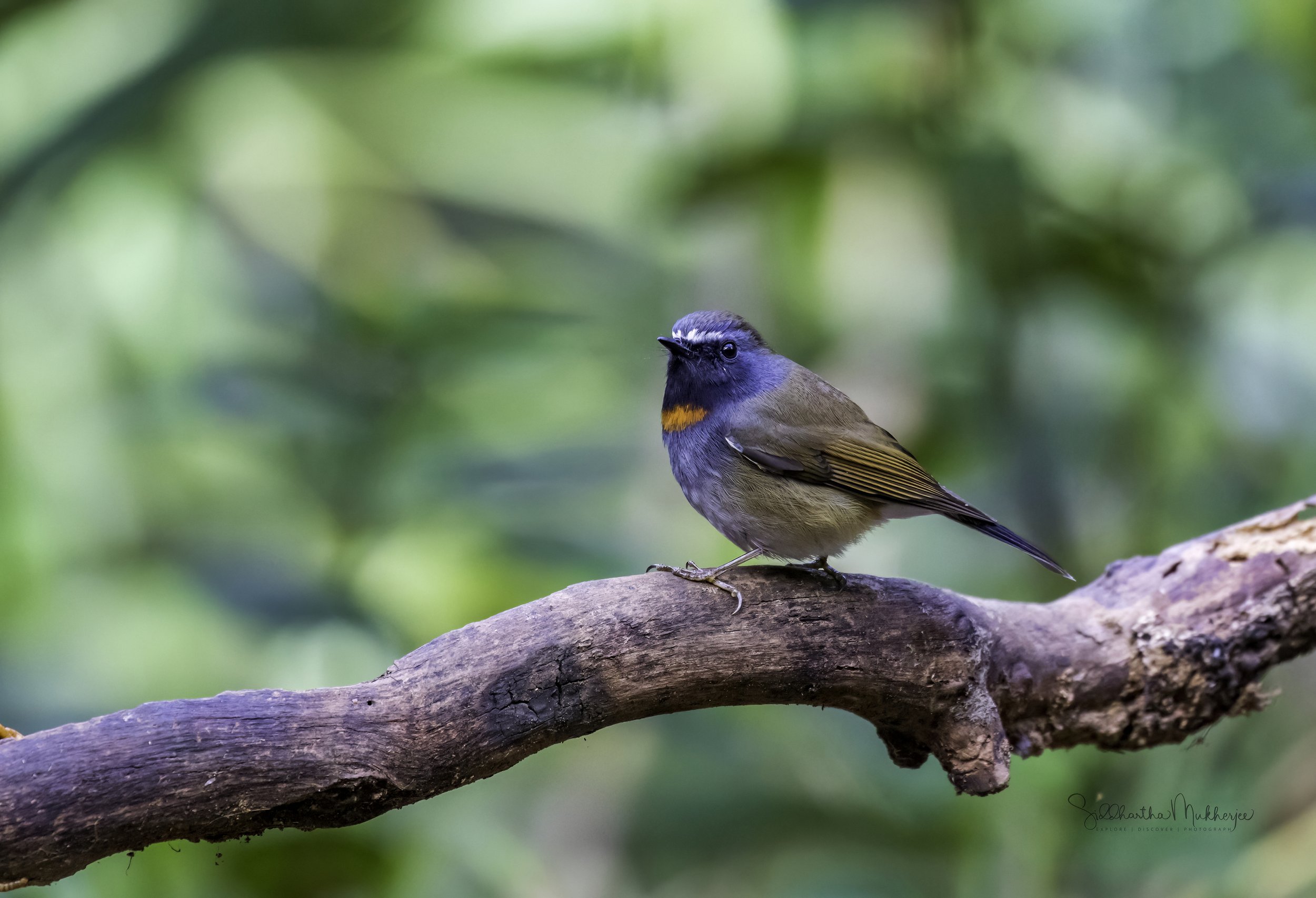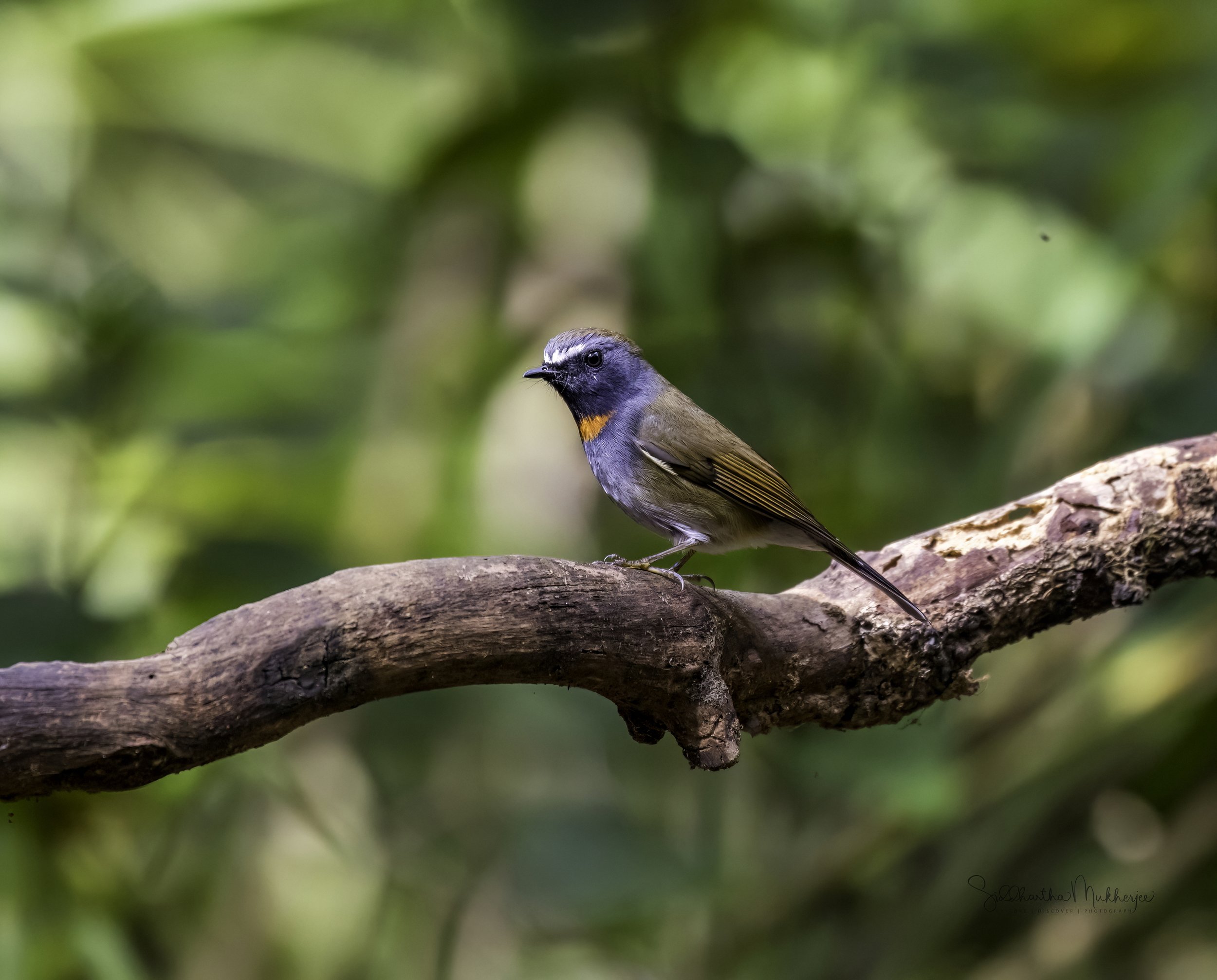Rufous-gorgeted Flycatcher
Ficedula strophiata
Doi Luang, Chiang Mai, Thailand
After the glamorous Indian Paradise Flycatcher I thought I will continue on the large family of Old World flycatchers, the Muscicapidae, a group of small passerine birds mostly restricted to the Old World (Europe, Africa and Asia) the focus today is on the Rufous-gorgeted, a bird very similar to the White-gorgeted Flycatcher and the Rufous-browed Flycatcher. These are mainly small arboreal insectivores, many of which, as the name implies, take their prey on the wing. The family includes 344 species and is divided into 51 genera. Old World flycatchers live in almost every environment with a suitable supply of trees, from dense forest to open scrub, & even the montane woodland of the Himalayas. The more northerly species migrate south in winter, ensuring a continuous diet of insects.
The appearance of these birds is very varied, but they mostly have weak songs and harsh calls. They are small to medium birds, ranging from 9 to 22 cm in length. Many species are dull brown in colour, but the plumage of some can be much brighter, especially in the males. Most have broad, flattened bills suited to catching insects in flight, although the few ground-foraging species typically have finer bills. Depending on the species, their nests are either well-constructed cups placed in a tree or cliff ledge, or simply lining in a pre-existing tree hole. The hole-nesting species tend to lay larger clutches, with an average of eight eggs, rather than just two to five.
But first about where I first saw this beautiful flycatcher - the spectacular mountains of Northern Thailand. The Dois of northern Thailand have been very kind to me from a birding perspective. There are so many I have already talked about and so many still remaining. I have written an overview here on the Birds of the Dois and have now started to break them up into individuals like the Gray-backed Shrike, Long-tailed Shrike, Spectacled Barwing, Siberian Rubythroat, the stunning Mrs. Gould’s Sunbird and the numerous other birds I have seen here.
About 685 kilometers to the north of Bangkok lies the former seat of the ancient Lanna Kingdom and is considered one of the most scenic provinces in the country given its mountain ranges, valleys, flora and fauna. A land of misty mountains and colourful hill tribes, a playground for seasoned travellers, and a delight for adventurers. Despite its relatively small size and blissful calm, Chiang Mai truly has it all, a city that is still firmly Thai in its atmosphere and attitude. It is the second-largest changwat (province) of Thailand. Bordered by Chiang Rai to the northeast, Lampang and Lamphun to the south, Tak to the southwest, Mae Hong Son to the west and the Shan State of Myanmar to the north. Located in a verdant valley on the banks of the Ping River, Chiang Mai was founded in 1296 as the capital of the ancient Lanna Kingdom. Today it is a place where past and the present seamlessly merge with modern buildings standing side by side with venerable temples. Of all the places I have visited in Thailand, Chiang Mai with its forests and mountains and the historic city of Ayutthaya are by far my favourites.
The word Chiang itself is from North Thai, or Lanna, meaning town or city and Mai means new making Chiang Mai the New City as it was founded later than Chiang Rai, the earlier capital of King Meng Rai. The districts in the province are called amphoe, and sub-districts are called tambon. Another twist is the use of Nakhon (or Nakorn or Nakhorn), derived from the Sanskrit word Nagara, also means city, though strictly speaking it refers to a capital city such as Nakorn Sri Ayutthaya (more on Ayutthaya later). Indeed to emphasise its former status you may sometimes see Chiang Mai referred to as Nakhon Ping. Other common names of geographical features include mae (river) and doi which is north Thai for mountain - for example Doi Inthanon and Mae Ping.
The four Dois we spent our time on were Doi Inthanon, Doi Ang Khang, Doi Luang and Doi SanJu.
Doi Luang & Doi SanJu in close proximity to the Doi Pha Hom Pok National Park, it is the second highest mountain in Thailand and a part of the Dan Lao Mountain range, northwest of Chiang Mai, sharing the border with Myanmar. Doi SanJu, can be easily accessed from Fang town. The mountain forest and no traffic make it easy to view birds. The entire area is very quiet, secluded and home to rare species like Mrs. Humes Pheasant, Long–tailed Sibia, Himalayan Cutia, Black–throated Tit, Black–eared Shrike Babbler, Whiskered Yuhina, Crimson–breasted Woodpecker, Fire–tailed Sunbird to name a few.
We didn’t have the good fortune to see all the species on all the mountains, that would have been impossible, but we did rack up quite a number of species - about 95 of them. This gallery is of the tiny, unobtrusive and retiring White-gorgeted Flycatcher who keeps to the dense lower levels of foothill forests.
Read about the other birds from these beautiful mountains. These are only a few of the huge number I have spotted and recorded there.
With that said, meet this lovely little flycatcher from the mountains of Chiang Mai, one of many I have seen there.
‡‡‡‡‡
Rufous-gorgeted Flycatcher
The Rufous-gorgeted flycatcher is a species of bird in the family Muscicapidae. It is found in the Indian Subcontinent and Southeast Asia, ranging across Bangladesh, Bhutan, Hong Kong, India, Laos, Myanmar, Nepal, Thailand, and Vietnam. Its natural habitat is subtropical or tropical moist montane forests. The rufous-gorgeted flycatcher is also common in the northern Kachin State of Myanmar, in temperate forest areas near boreal mountains. They spend winters in places like Thailand, North Laos, and Vietnam, and the Himalayas are a major breeding range. As the name denotes, they are known for their reddish brown color with a distinctly colored patch on their throat.
Two subspecies are recognised:
Ficedula strophiata strophiata - Distributed in the Himalayas from W Himachal Pradesh E to NE India (E Arunachal Pradesh, S Assam, Meghalaya and Nagaland), C and S China (SE Xizang E to SW Gansu, Shaanxi, W Hubei, Sichuan, Guizhou and N and W Yunnan), SE Bangladesh (Chittagong Hills) and W and N Myanmar; non-breeding also NE Bangladesh, S China (W and S Yunnan, Guangxi), C, E and S Myanmar, N Thailand and N Indochina.
Ficedula strophiata fuscogularis - Distributed in E Laos and C Vietnam (S Annam).
It is a small to medium-sized forest flycatcher with prominent face pattern, rufous patch on breast and white patches at base of tail. The male nominate race has white on forehead extending narrowly over lores to above eye, black cheek, chin and throat, deep grey fore crown, ear-coverts and side of neck; rear crown hindneck and upperparts, including upperwing, olive-brown, tertials and inner secondaries edged warm brown; uppertail-coverts dark grey or blackish, becoming black on tail, except for broad white bases of all outer rectrices; centre of upper breast is bright rufous (frequently concealed, occasionally lacking), bordered by grey on breast side and lower breast, flanks buffish, belly to undertail-coverts whitish; iris brown; bill black; legs dark grey or black. Female is similar to male, but has less distinct white on forehead to over eye, paler face pattern, duller orange patch on upper breast, and slate-grey centre of lower breast. The juvenile has head, upperparts and underparts heavily spotted with buff, spots on scapulars fringed darker, breast and flanks barred or scalloped with darker fringes, flight-feathers and tail as adult. Race fuscogularis male has warmer olive-brown upperparts than nominate, larger rufous patch on breast and slate-grey side of head to throat, female has grey chin and throat.
The Old World flycatchers are a large family, the Muscicapidae, of small passerine birds mostly restricted to the Old World (Europe, Africa and Asia). These are mainly small arboreal insectivores, many of which, as the name implies, take their prey on the wing. The family includes 344 species and is divided into 51 genera.
The name Muscicapa for the family was introduced by the Scottish naturalist John Fleming in 1822. The word had earlier been used for the genus Muscicapa by the French zoologist Mathurin Jacques Brisson in 1760. Muscicapa comes from the Latin musca meaning a fly and capere to catch.
The appearance of these birds is very varied, but they mostly have weak songs and harsh calls. They are small to medium birds, ranging from 9 to 22 cm in length. Many species are dull brown in colour, but the plumage of some can be much brighter, especially in the males. Most have broad, flattened bills suited to catching insects in flight, although the few ground-foraging species typically have finer bills.
Old World flycatchers live in almost every environment with a suitable supply of trees, from dense forest to open scrub, & even the montane woodland of the Himalayas. The more northerly species migrate south in winter, ensuring a continuous diet of insects.
Depending on the species, their nests are either well-constructed cups placed in a tree or cliff ledge, or simply lining in a pre-existing tree hole. The hole-nesting species tend to lay larger clutches, with an average of eight eggs, rather than just two to five.
The family formerly included fewer species. At the time of the publication of the third edition of Howard and Moore Complete Checklist of the Birds of the World in 2003, the genera Myophonus, Alethe, Brachypteryx and Monticola were included in Turdidae. Subsequent molecular phylogenetic studies have shown that the species in these four genera are more closely related to species in Muscicapidae. As a consequence, these four genera are now placed here. In contrast, the genus Cochoa which was previously placed in Muscicapidae has been shown to belong in Turdidae.
Species in same genus
Ficedula albicilla, Taiga flycatcher
Ficedula dumetoria, Rufous-chested flycatcher
Ficedula elisae, Green-backed flycatcher
Ficedula erithacus, Slaty-backed flycatcher
Ficedula hodgsoni, Pygmy flycatcher
Ficedula hyperythra, Snowy-browed flycatcher
Ficedula mugimaki, Mugimaki flycatcher
Ficedula narcissina, Narcissus flycatcher
Ficedula parva, Red-breasted flycatcher
Ficedula sapphira, Sapphire flycatcher
Ficedula strophiata, Rufous-gorgeted flycatcher featured here
Ficedula tricolor, Slaty-blue flycatcher
Ficedula westermanni, Little pied flycatcher
Ficedula zanthopygia, Yellow-rumped flycatcher
The following gallery of the Rufous-gorgeted flycatcher is of the birds observed and photographed in and around Doi Luang near Chiang Mai.
‡‡‡‡‡
Related Posts

